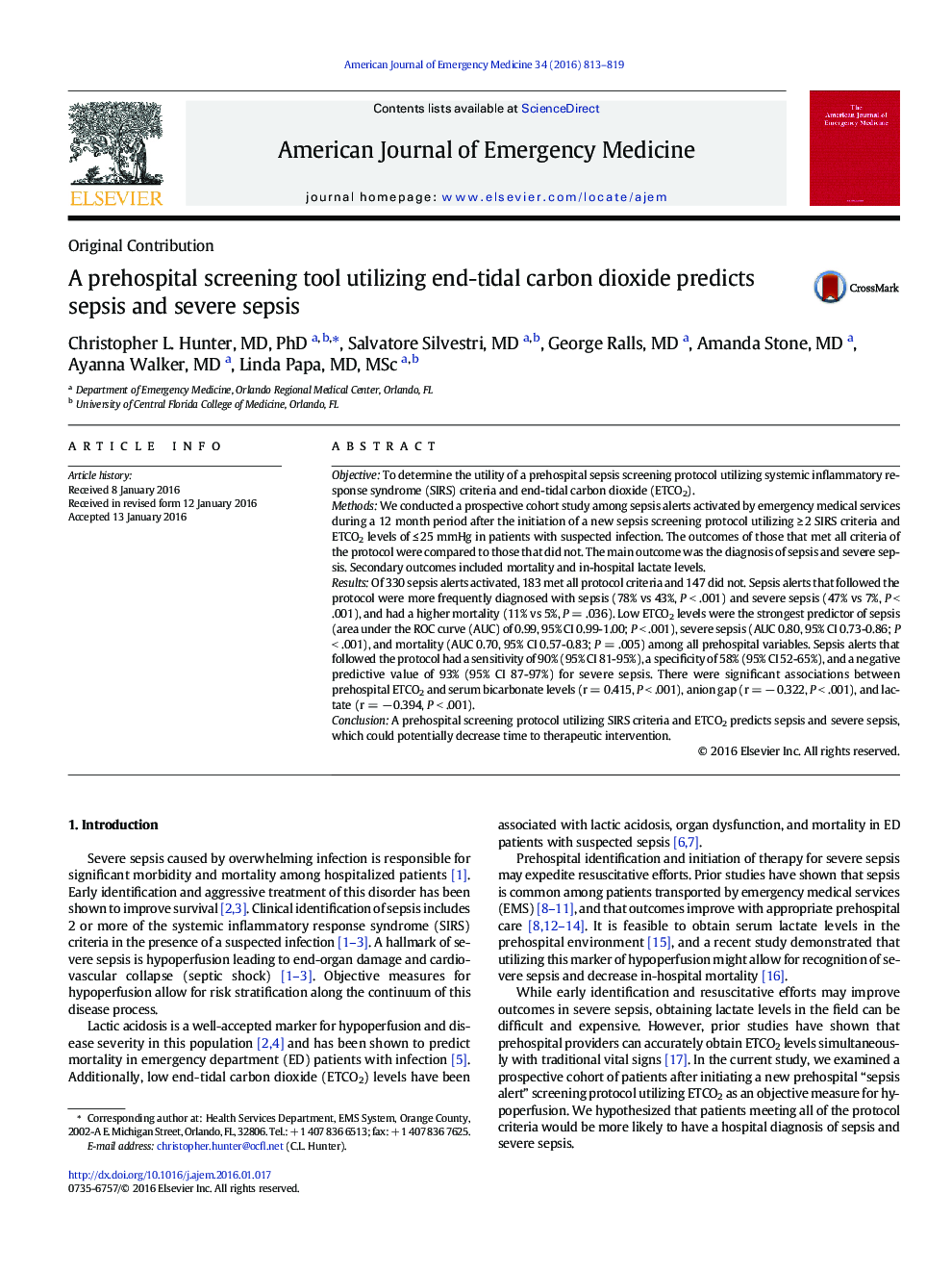| Article ID | Journal | Published Year | Pages | File Type |
|---|---|---|---|---|
| 3223293 | The American Journal of Emergency Medicine | 2016 | 7 Pages |
ObjectiveTo determine the utility of a prehospital sepsis screening protocol utilizing systemic inflammatory response syndrome (SIRS) criteria and end-tidal carbon dioxide (ETCO2).MethodsWe conducted a prospective cohort study among sepsis alerts activated by emergency medical services during a 12 month period after the initiation of a new sepsis screening protocol utilizing ≥ 2 SIRS criteria and ETCO2 levels of ≤ 25 mmHg in patients with suspected infection. The outcomes of those that met all criteria of the protocol were compared to those that did not. The main outcome was the diagnosis of sepsis and severe sepsis. Secondary outcomes included mortality and in-hospital lactate levels.ResultsOf 330 sepsis alerts activated, 183 met all protocol criteria and 147 did not. Sepsis alerts that followed the protocol were more frequently diagnosed with sepsis (78% vs 43%, P < .001) and severe sepsis (47% vs 7%, P < .001), and had a higher mortality (11% vs 5%, P = .036). Low ETCO2 levels were the strongest predictor of sepsis (area under the ROC curve (AUC) of 0.99, 95% CI 0.99-1.00; P < .001), severe sepsis (AUC 0.80, 95% CI 0.73-0.86; P < .001), and mortality (AUC 0.70, 95% CI 0.57-0.83; P = .005) among all prehospital variables. Sepsis alerts that followed the protocol had a sensitivity of 90% (95% CI 81-95%), a specificity of 58% (95% CI 52-65%), and a negative predictive value of 93% (95% CI 87-97%) for severe sepsis. There were significant associations between prehospital ETCO2 and serum bicarbonate levels (r = 0.415, P < .001), anion gap (r = − 0.322, P < .001), and lactate (r = − 0.394, P < .001).ConclusionA prehospital screening protocol utilizing SIRS criteria and ETCO2 predicts sepsis and severe sepsis, which could potentially decrease time to therapeutic intervention.
